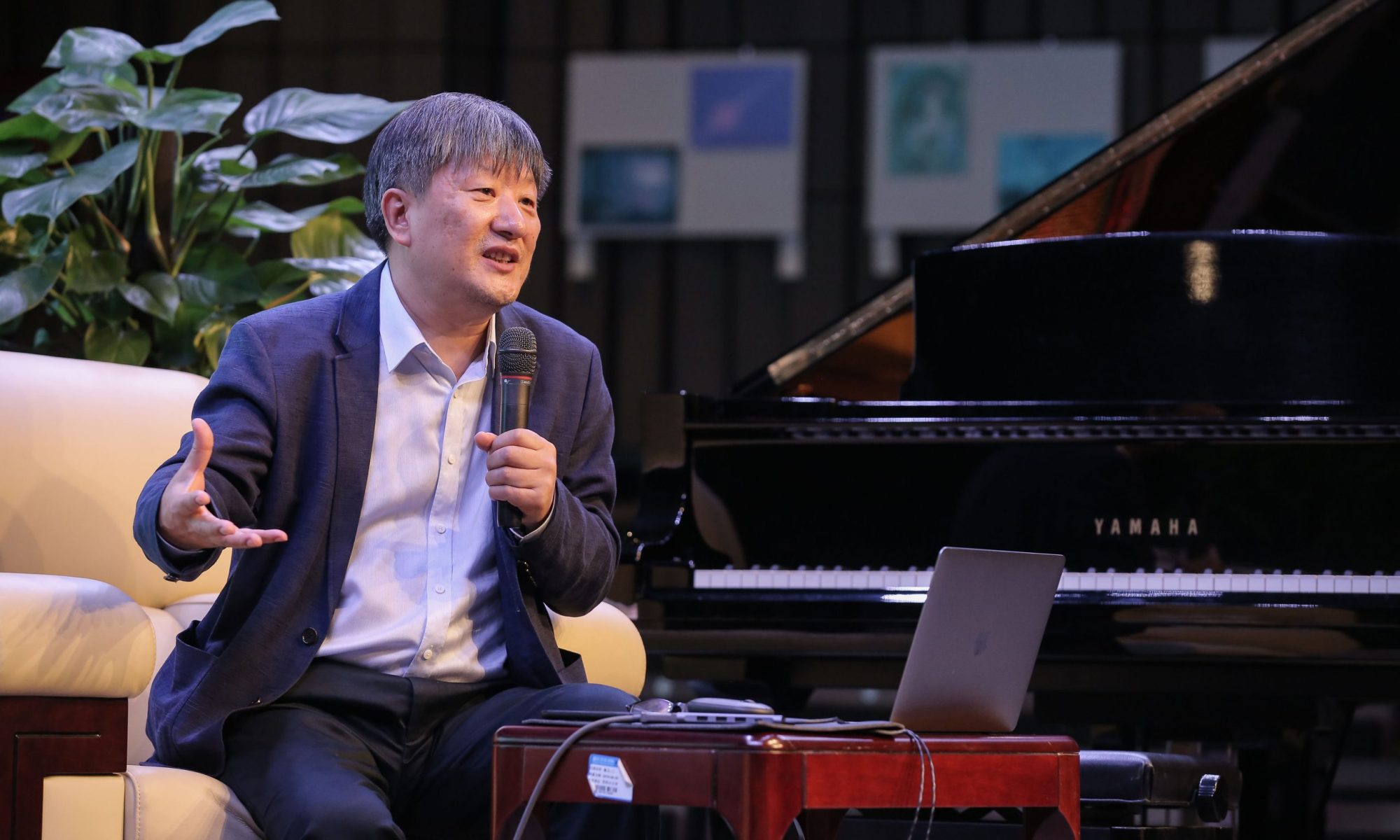” Whispers of a Gentle Wind ” (2011) – for Banhu, Sheng, Pipa and Guzheng
本曲的标题来自郑板桥《墨竹图》的题诗,整曲以个性化的语言来表达“自然”这一 中国传统艺术的核心主题。乐曲结构分成四个部分,采用较为自由的节奏与速度布局,浑 然天成,具有中国音乐即兴而洒脱的特性。全曲共有 127 个小节,每小节都被设计成独立 的音响瞬间。这部作品中很少运用重复的材料,因此作品进程中不断产生出新的音响。即 使偶尔有重复的材料出现,也会使其以变奏或变化形态来展现。
谈到本曲的构思过程,作曲家说道:“作曲家创作每部作品都会经历一次面对‘传统’ 的思考过程:乐器的传统、音乐语言的传统、音乐风格与句法结构的传统等等,当下的创 作是无法离开有意识地对“传统”进行思考,否则也就无法创作出相较于‘传统’而言的 ‘新’音乐。同时,作曲家还必须面对当下音乐创作现状进行反思,如何使自己的音乐创 作与同时代作曲家有所不同?如何取舍同行创作的有益经验?如何定位与明确自己的音乐 创作风格,如何实现等等。如果缺乏这一层面的思考,作曲家的个性也无从谈起。”在接受 德国 Sikorski 出版社采访时,作曲家也对这部作品做出介绍:“在这部为 4 件中国乐器创 作的《清风静响》中,基本体现出我个人化的风格特征——我寻找到了表现中国传统艺术 美学所追求的那种空旷音响空间与瞬息万变的音乐处理方式:即音乐语言虚实相间、速度 自由变换与音色浓淡刹时间转换流动等等。”
2012 年度的中国音乐艺术发展报告对这部作品作出了客观的评价:“在创作领域,经 历了传统与现代、中国与世界的大碰撞与大融合,当代中国作曲家已经开始‘找回自己’, 并在‘以我为主’的基础上获得了新一轮融合与回归的螺旋式上升……贾国平的民族室内 乐《清风静响》(为琵琶、古筝、板胡和笙而作)就是一部有代表性的作品……作品不但流 淌着中国人特有的审美趣味和情态,而且也达到了中国传统音乐与西方现代音乐技术以及 现代审美取向的深度融合。”
首演于 2011 年 5 月 14 日,北京音乐厅, “北京现代室内乐团 Ensmeble Contempo Beijing”成立音乐会。
板胡:胡瑜 笙:董颖 琵琶:兰维薇 古筝:宋心馨
The title comes from the poem of Zheng Banqiao “Mo Zhu Tu”, the whole piece expresses the “natural” in personalized language, which is the core of traditional Chinese art. The structure is divided into four parts, mostly adopting a more
flexible tempo and free layout. It’s natural and free, showing the unique Chinese characteristics of music improvisation. The whole piece is a total of 127 sub- sections, each section is a separate audio moment: the process fills with the continuous production of new sound, therefore duplication technology is seldom used in this work, even if repetitive material appears occasionally, it’s variations or the transformational form .
Commenting on the conception of this piece, Jia said: “Every time the composer writing a piece will experience the process that thinking about ‘tradition’: the tradition of musical instrument,the tradition of musical language, the tradition of music style and the tradition of syntactic structure, etc. Contemporary music composition cannot be completed without the consciously thought on ‘traditional’, otherwise, the ‘new’ music that relative to traditional one could not be created then. At the same time, the composer has to give a reflection in face of the current situation on music as well. How to make your own music different? How to absorb the useful experience from others? How to define your music style? How to achieve the goals? …. If it’s lack of thinking in this respect, the personality of composer’s is out of the question.” In an interview with Sikorski music publishing, Jia Guoping saied “The piece for four Chinese musical instruments ‘Whispers of a Gentle Wind’reflects basically my personal characteristics. I’ve found a processing method of musical sound, which is ever- changing and with open space, showing the aesthetic pursuit of Chinese traditional art, that is the actual and virtual situation of music language, tempo changes, and instantly transformation and flow characteristics of tone color. “
The 2012 Annual Report On The Development Of Chinese Music Art made an objective assessment to this work: “In the field of composition, having went through the time of tradition and modern, the largest collision and merging of China and world, Chinese contemporary composers have begun to ‘find themselves’, and obtained a new round of spiraling of integration and regression on the basis of ‘self-centered’ …… Jia’s Chinese national chamber music’Whispers of a Gentle Wind’ ( for Pipa, Zheng , Banhu and Sheng ) is right a representation of this …… not only flowing with the unique aesthetic taste of Chinese, but also
achieved the deeply fusion of Chinese traditional music, western contemporary music techniques, and modern aesthetic tendency. “
This piece premiered at “Ensemble Contempo Beijing Concert” on 14th, May , 2011, in Beijing Concert Hall.
Banhu: Hu Yu Sheng: Dong Ying
Pipa: Lan Weiwei Guzheng: Piece Xinxin
